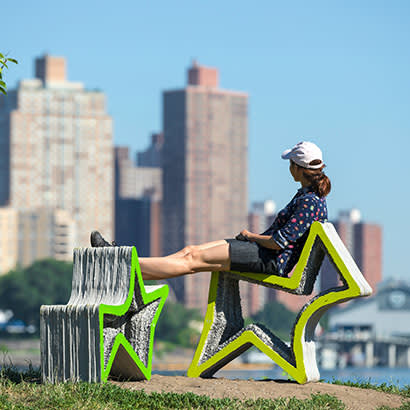
Sustainability and advances in technology are what keep us on our toes and thinking about what the next big thing is. 3D printers have been all the rage lately in makerspaces and community labs. Using this technology, people are building things that only a few years ago would have been nearly impossible. This technology has so many applications, ranging from simple designs to large-scale infrastructure, and some parks are already testing the waters.
One of the most sustainable approaches to using this technology comes from a company in Holland, The New Raw. Through its “Print Your City” initiative, it uses the city’s plastic waste to build public space with robotic 3D printing and the involvement of citizens. The 3D-printed street furniture has integrated extra functions that promote a healthy and environment-friendly lifestyle in the city. Each object can be customized to include features like a bike rack or a mini gym, a tree pot or even a dog’s feeding bowl or a bookcase. The furniture is not only 100 percent recyclable but created from about 25 pounds of recyclable materials. Talk about sustainability!
U.S. agencies already using this technology include Summit Metro Parks in Summit County, Ohio, and Socrates Park in Long Island City, New York. Summit Metro Parks’ naturalist staff are 3D printing replicas of delicate nature items, such as shells, skulls and bones, so its patrons can handle them, and they do not need to be kept behind glass. Socrates Park uses 3D printing to create functioning sculpture chairs that fit in with its sculpture-themed park.
3D printing also is being applied to infrastructure projects, such as metal and concrete bridges, around the world! Recently, the longest 3D-printed concrete pedestrian bridge (86 feet) was completed in a Shanghai park, resulting in an estimated 33 percent savings over conventional methods. The U.S. Army is exploring this application by 3D printing barracks and footbridges that could be used in remote or disaster areas. While research is still being done on the performance of these new materials and methods, it’s something to keep an eye on for the future!
Michele White, CAE is an NRPA Program Manager, Conservation.

